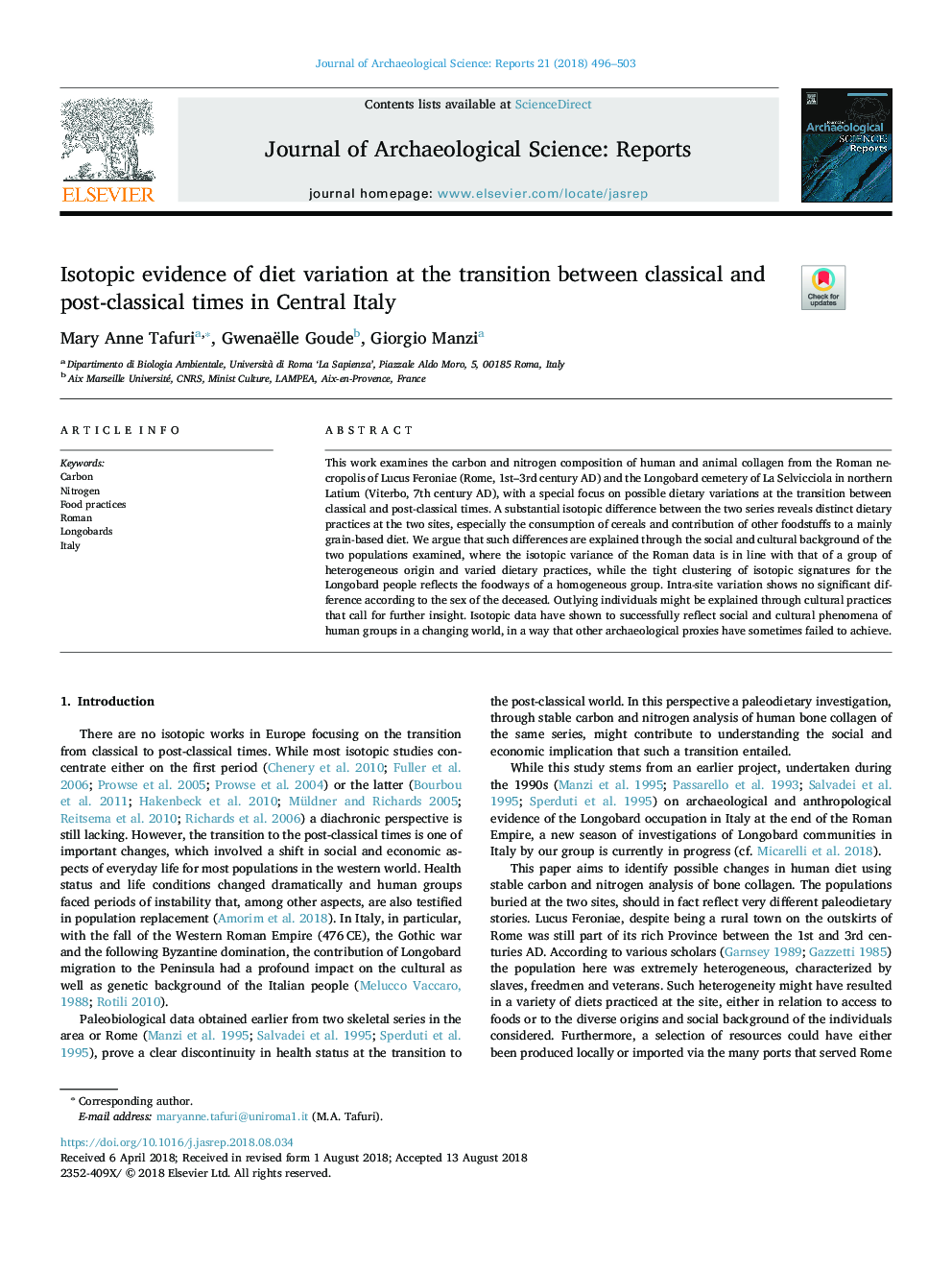| Article ID | Journal | Published Year | Pages | File Type |
|---|---|---|---|---|
| 11005193 | Journal of Archaeological Science: Reports | 2018 | 8 Pages |
Abstract
This work examines the carbon and nitrogen composition of human and animal collagen from the Roman necropolis of Lucus Feroniae (Rome, 1st-3rd century AD) and the Longobard cemetery of La Selvicciola in northern Latium (Viterbo, 7th century AD), with a special focus on possible dietary variations at the transition between classical and post-classical times. A substantial isotopic difference between the two series reveals distinct dietary practices at the two sites, especially the consumption of cereals and contribution of other foodstuffs to a mainly grain-based diet. We argue that such differences are explained through the social and cultural background of the two populations examined, where the isotopic variance of the Roman data is in line with that of a group of heterogeneous origin and varied dietary practices, while the tight clustering of isotopic signatures for the Longobard people reflects the foodways of a homogeneous group. Intra-site variation shows no significant difference according to the sex of the deceased. Outlying individuals might be explained through cultural practices that call for further insight. Isotopic data have shown to successfully reflect social and cultural phenomena of human groups in a changing world, in a way that other archaeological proxies have sometimes failed to achieve.
Related Topics
Social Sciences and Humanities
Arts and Humanities
History
Authors
Mary Anne Tafuri, Gwenaëlle Goude, Giorgio Manzi,
